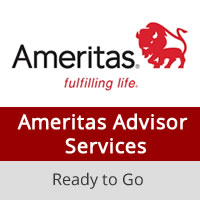Matching Financial Needs Paid in After-Tax Dollars
Blog
Our blogs focus on AAVUL's many wealth and investment planning applications.
The 2016 US Trust study titled “Insights on Wealth and Worth” surveyed investors with a minimum of $3 million in investable wealth, and the majority (55%) said, “it’s more important to minimize the impact of taxes when making investment decisions than it is to pursue the highest possible returns regardless of the tax consequences”.
Your clients understand the constant erosive impact incurred with taxes on the portfolio positions you implement.
Financial Needs are Paid in After-Tax Dollars
As you build your clients’ financial plans, you map the use of cash year by year across the planning horizon. The explicit structure is each use of cash requires a source to fund it.
Whether it’s funding an annual lifestyle budget, paying for college, buying a vacation home, or retirement income, your clients’ financial needs and aspirations ultimately come down to writing a check to pay for them. The money paid is in after-tax dollars.
Increasing After-Tax Returns Matches the Funding Requirement
Your clients’ appreciation for taxes’ erosive affect has a real economic reality – if the funding sources are not valued in after-tax dollars, a funding gap occurs. Each funding gap must be paid with dollars/wealth elsewhere in the investment plan. Therefore, increasing after-tax returns minimizes the risk of a funding gap.
Funding gaps are riskiest in the long-term portion of the planning horizon. Simply, while each client’s financial needs can be mapped decades into the future, the long-term funding sources are much more volatile to predict.
Advisor-Applied Variable Universal Life (AAVUL) is the Ideal Matching Source
The VUL portfolio you build, manage, and monitor becomes an ideally matched funding source for long-term financial needs. Why? The entire portfolio – its income, gains, and cash access – is tax free. Future needs and goals, and the AAVUL portfolio backing them, are both valued in after-tax dollars.
-
Insurance Like It Should Be: Benefits without Barriers
Advisor-Applied VUL (AAVUL) is a vastly different – and more powerful – wealth-planning tool than your past experience may suggest. You and your clients gain VUL’s high-value benefits but the obstacles that may have prevented you from using it in the past are stripped away.

Take The Next Step.
Embrace Tax-Free Portfolios For Your HNW, High-Income Clients.
Experienced PPLI Practitioners
Investment
Products Firms
Advisors
New to AAVUL
Resources
for Advisors
Insurance Like It Should Be
Benefits, without Barriers
You’re most familiar with retail VUL and its drawbacks:
loads; high costs; complex products; investment limitations; a difficult sales process.
Check out our AAVUL partners’ solutions that keep VUL's benefits while removing the barriers.






Recent Comments